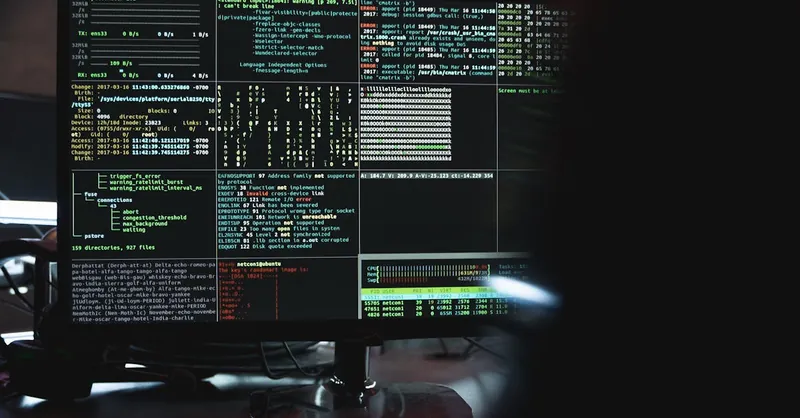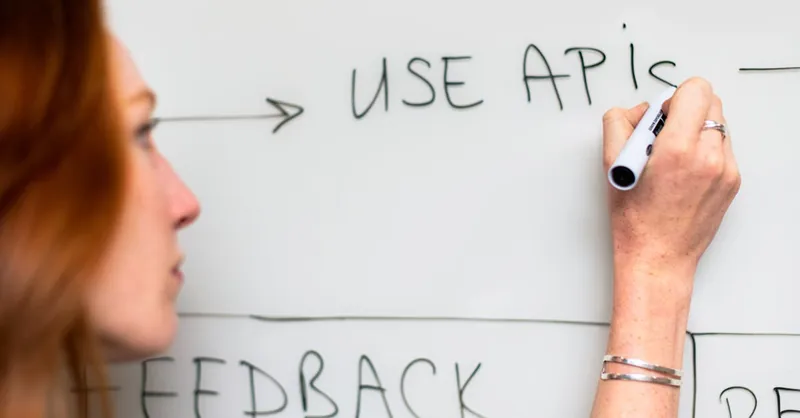Using Celery with Django for Background Tasks: A Practical Guide
Category: Django
Unlock the Power of Asynchronous Processing in Django
If you're an aspiring or intermediate Django developer overwhelmed by slow user experiences due to time-consuming tasks, you're in the right place. You're likely searching for a reliable way to run background jobs seamlessly, whether it's sending emails, processing images, or managing scheduled tasks without blocking your web requests. This post addresses that exact challenge by providing clear, practical guidance on integrating Celery, the go-to asynchronous task queue, with Django. We'll move beyond abstract theory, diving into real-world configurations, common pitfalls, and best practices tailored for developers at your skill level. Unlike generic tutorials, this post bundles essential insights on Celery with hands-on Django REST Framework examples and tips to optimize your development workflow. We understand balancing backend task processing with a smooth frontend experience can be tricky—that's why this guide focuses on straightforward setups, debugging techniques, and scaling strategies all in one place. If you're ready to master background task execution in Django and improve your app's responsiveness, keep reading to grasp everything from installation to advanced usage scenarios.
- Unlock the Power of Asynchronous Processing in Django
- Introduction to Celery: What It Is and Why Use It with Django
- Setting Up Celery in a Django Project
- Creating and Running Your First Celery Task
- Configuring Celery Beat for Scheduled Tasks
- Best Practices for Structuring Celery Tasks in Large Django Projects
- Monitoring and Debugging Celery Tasks: Tools and Techniques to Keep Your Background Jobs Healthy
- Scaling Celery Workers for Production
- Security and Performance Considerations when Using Celery with Django
- Integrating Celery with Django REST Framework: Kick Off Background Tasks and Handle Results Asynchronously
- Common Pitfalls and Troubleshooting Tips When Using Celery with Django
Introduction to Celery: What It Is and Why Use It with Django
When building robust web applications with Django, handling time-consuming operations directly within request-response cycles can lead to slow, unresponsive user experiences. This is where Celery, a powerful asynchronous task queue, shines. Celery allows you to offload heavy or delayed tasks—like sending emails, processing files, or performing data analysis—to run in the background, freeing your Django app to respond instantly to user requests.
Celery integrates seamlessly with Django, enabling asynchronous task processing that improves scalability and reliability. Instead of blocking the main thread, Celery leverages message brokers (such as RabbitMQ or Redis) to queue tasks for worker processes that execute them independently. This architecture brings several key benefits to Django developers:
- Improved user experience - Background tasks prevent slowdowns and timeout errors during critical web interactions.
- Better application scalability - Task queues manage workloads efficiently, allowing your app to handle increased traffic and computational demands.
- Simplified error handling and retries - Celery supports automatic task retries and detailed monitoring of job statuses.
- Flexible scheduling - Execute periodic or scheduled tasks easily without relying on external cron jobs.
Understanding Celery’s role in asynchronous task management is essential for building high-performance Django applications that maintain smooth frontend responsiveness while executing complex operations behind the scenes. In the sections ahead, we will guide you through setting up Celery with Django, writing your first tasks, and optimizing your workflow with practical, hands-on examples.

Image courtesy of cottonbro studio
Setting Up Celery in a Django Project
Getting Celery up and running with your Django application involves a few crucial steps: installing Celery, configuring settings, and selecting an appropriate message broker like Redis or RabbitMQ. These components work together to ensure your background tasks are processed efficiently and reliably.
1. Installing Celery and Dependencies
First, install the Celery package using pip. It’s also common to install either Redis or RabbitMQ as a message broker—Redis tends to be easier to set up and is widely used in Django projects.
pip install celery
pip install redis # if you choose Redis as your broker
If you prefer RabbitMQ, make sure RabbitMQ is installed and running on your system, but no Python package for RabbitMQ itself is strictly required as Celery uses amqp protocol internally.
2. Configuring Django Settings for Celery
Next, create a dedicated celery.py module in your Django project root (the same directory as settings.py and wsgi.py). This file configures the Celery app, ties it into your Django settings, and specifies the message broker.
# myproject/celery.py
import os
from celery import Celery
# set the default Django settings module for the 'celery' program.
os.environ.setdefault('DJANGO_SETTINGS_MODULE', 'myproject.settings')
app = Celery('myproject')
# Using a string here means the worker doesn't have to serialize
# the configuration object to child processes.
app.config_from_object('django.conf:settings', namespace='CELERY')
# Load task modules from all registered Django app configs.
app.autodiscover_tasks()
In your Django settings.py, add the following Celery configuration to specify the broker URL:
# settings.py
# Choose Redis as the broker (replace with RabbitMQ URL if applicable)
CELERY_BROKER_URL = 'redis://localhost:6379/0'
# Optional: Set timezone and enable UTC
CELERY_TIMEZONE = 'UTC'
CELERY_ENABLE_UTC = True
3. Choosing the Right Message Broker: Redis vs. RabbitMQ
Redis
- Simplicity: Easy to install and configure.
- Performance: Fast in-memory data store, suitable for most web apps.
- Use Cases: Ideal for small to medium Django projects with straightforward task queues.
RabbitMQ
- Robustness: Supports advanced messaging protocols, more reliable for complex workflows.
- Features: Offers greater control with message acknowledgments, priority queues, and better support for distributed systems.
- Use Cases: Recommended for enterprise applications requiring complex message routing and durability.
For beginners and most Django use cases, Redis is the preferred choice due to its simplicity and speed. You can install Redis on your local machine or use managed Redis services on cloud platforms.
By carefully following these installation and configuration steps, you create a solid foundation for integrating Celery into your Django project, ready to handle asynchronous task processing at scale. The correct setup of your message broker is critical to ensure your background jobs run smoothly and reliably, improving both application responsiveness and user experience.

Image courtesy of Christina Morillo
Creating and Running Your First Celery Task
With Celery configured and ready in your Django project, it’s time to write your first background task. Celery tasks are simply Python functions decorated with @app.task, allowing them to be executed asynchronously by worker processes. This makes offloading time-consuming operations from your Django views or Django REST Framework (DRF) endpoints straightforward and efficient.
Writing a Simple Celery Task
Start by creating a new module named tasks.py inside one of your Django apps (e.g., myapp/tasks.py). Here, define a function to simulate a background job, such as sending a welcome email or performing a time-intensive calculation:
# myapp/tasks.py
from celery import shared_task
import time
@shared_task
def sample_task(duration):
"""Simulates a long-running task by sleeping for `duration` seconds."""
print(f"Task started, sleeping for {duration} seconds...")
time.sleep(duration)
print("Task completed!")
return f"Slept for {duration} seconds"
Using @shared_task allows Celery to automatically associate this task with your project’s Celery app without needing to import the app instance directly, which is helpful for modular Django apps.
Invoking Celery Tasks from Django Views or DRF Endpoints
To integrate this task into your web application, you simply call the task’s .delay() method, which queues the job for asynchronous processing. Here’s how to trigger the task from a standard Django view:
# myapp/views.py
from django.http import JsonResponse
from .tasks import sample_task
def trigger_task_view(request):
task_result = sample_task.delay(5) # Run task asynchronously (sleep 5 seconds)
return JsonResponse({"task_id": task_result.id, "status": "Task started"})
Similarly, in a DRF API view, you might enqueue the task inside a POST handler:
# myapp/api_views.py
from rest_framework.views import APIView
from rest_framework.response import Response
from .tasks import sample_task
class TriggerTaskAPIView(APIView):
def post(self, request, *args, **kwargs):
duration = request.data.get('duration', 5)
task = sample_task.delay(int(duration))
return Response({"task_id": task.id, "status": "Task queued"})
Verifying Task Execution
Once you dispatch tasks using .delay(), Celery workers pick them up and run them independently of your Django server process. To verify your task is working correctly:
-
Run the Celery worker in a separate terminal window inside your project directory:
bash celery -A myproject worker --loglevel=info -
Watch the console output for logs confirming task start, completion, and returned results.
-
Optionally, check Celery task statuses programmatically or by using monitoring tools like Flower for a visual dashboard.
Using this process, you seamlessly offload slow operations to Celery workers, freeing your Django app to handle incoming requests swiftly and improving overall user experience. This pattern lays the groundwork for more complex asynchronous workflows, such as chaining tasks or handling retries, which we will explore in upcoming sections.

Image courtesy of cottonbro studio
Configuring Celery Beat for Scheduled Tasks
Beyond handling ad-hoc background jobs, many Django applications require periodic execution of tasks such as sending daily reports, cleaning up stale data, or syncing with external APIs. This is where Celery Beat becomes invaluable. Celery Beat is a lightweight scheduler that integrates seamlessly with Celery to run periodic tasks automatically at specified intervals, eliminating the need to rely on system cron jobs.
Setting Up Celery Beat in Django
To enable Celery Beat in your project, you need to:
- Install Celery Beat (included by default when you install Celery).
- Configure scheduled tasks either programmatically or via settings.
- Run the Celery Beat scheduler alongside your workers.
A typical configuration involves defining periodic tasks inside celery.py or another dedicated module:
from celery.schedules import crontab
app.conf.beat_schedule = {
'send-daily-report': {
'task': 'myapp.tasks.send_report',
'schedule': crontab(hour=7, minute=30),
'args': (),
},
'cleanup-old-entries': {
'task': 'myapp.tasks.cleanup_data',
'schedule': 3600.0, # Every hour
'args': (),
},
}
In this example:
- The
send-daily-reporttask runs every day at 7:30 AM using a cron-like schedule. - The
cleanup-old-entriestask runs hourly using a time interval in seconds.
Common Use Cases for Celery Beat Scheduled Tasks
- Automated Reporting: Send summary emails or generate analytics reports at regular intervals without manual intervention.
- Data Maintenance: Perform routine cleanup, such as deleting old sessions, archiving records, or purging temporary files to keep your database lean.
- External API Syncing: Poll third-party services periodically to fetch updates or synchronize states.
- Notification Systems: Schedule recurring reminders or alerts for users.
Running Celery Beat with Your Workers
To start Celery Beat alongside your Celery workers, run these commands in separate terminal sessions:
celery -A myproject beat --loglevel=info
celery -A myproject worker --loglevel=info
Alternatively, you can run both simultaneously with the -B flag (not recommended for production):
celery -A myproject worker -B --loglevel=info
Using Celery Beat in tandem with your Celery workers ensures scheduled tasks execute reliably and efficiently, keeping your Django application proactive and responsive to time-based workflows. Proper configuration of Celery Beat can significantly reduce manual operational overhead and automate repetitive maintenance or communication tasks, enhancing your app’s robustness and user engagement.

Image courtesy of Mikhail Nilov
Best Practices for Structuring Celery Tasks in Large Django Projects
When your Django project grows and the number of background tasks multiplies, maintaining an organized and clean codebase becomes essential to prevent technical debt and ensure the scalability of your asynchronous workflows. Applying best practices to structure Celery tasks effectively helps you avoid common pitfalls such as code smells, tight coupling, and duplicated logic, while making your task code reusable, testable, and maintainable.
Organizing Celery Tasks by Domain and Functionality
A modular structure aligned with your Django app architecture improves readability and simplifies debugging. Follow these guidelines:
- Group tasks by app or feature: Place
tasks.pyinside individual Django apps, keeping related tasks close to their business logic. - Split large tasks into smaller ones: Break complex background operations into smaller, focused Celery tasks that can be chained or grouped, facilitating easier testing and reusability.
- Use submodules for many tasks: If a single app has a large number of tasks, organize them into submodules (e.g.,
myapp/tasks/email_tasks.py,myapp/tasks/data_processing_tasks.py) instead of crowding a singletasks.py.
Writing Reusable, Testable, and Side-Effect-Free Tasks
To maintain clean and reliable task code:
- Keep task functions focused on a single responsibility, avoiding entanglement with HTTP request context or database transaction details.
- Pass simple, serializable arguments to tasks to ensure consistent task execution across distributed worker processes.
- Extract core logic to separate Python modules or service classes which tasks can invoke, enabling task execution to be tested independently from Celery's asynchronous framework.
- Avoid importing Django models or querysets directly inside task definitions if possible; instead, pass IDs or simple parameters and fetch objects within the task body to prevent issues with serialization or stale data.
Avoiding Common Code Smells in Celery Tasks
Watch out for these frequent anti-patterns:
- Heavy logic inside tasks: Tasks should delegate complex business logic to service layers or utility modules rather than embedding it directly.
- Tasks that tightly couple to views or serializers: Background tasks must remain decoupled from HTTP layer code to improve modularity.
- Mixing synchronous and asynchronous code in the same function, which can create subtle bugs and blocking behavior.
- Long-running or blocking tasks designed as single units: Instead, use Celery’s task chaining, grouping, or canvas features to compose workflows of smaller tasks.
Leveraging Django Signals and Celery for Decoupling
Integrating Django signals with Celery tasks provides a clean way to trigger asynchronous jobs from model events without polluting business logic:
- Connect signals (e.g.,
post_save,post_delete) to task triggers in your app’ssignals.py. - Clearly separate signal handlers that enqueue tasks from the actual task implementations.
- This promotes maintainability and reduces coupling between your models and task execution layers.
Following these best practices ensures your Celery task code remains organized, efficient, and scalable as your Django project expands. Clean task structure accelerates onboarding, simplifies testing, and boosts application reliability—all critical for production-ready asynchronous processing in Django ecosystems.

Image courtesy of cottonbro studio
Monitoring and Debugging Celery Tasks: Tools and Techniques to Keep Your Background Jobs Healthy
When running background tasks in Django with Celery, effective monitoring and debugging become critical to maintaining a smooth and reliable asynchronous processing environment. Without proper visibility and error handling, silent failures or performance bottlenecks can degrade your application’s responsiveness and frustrate users. Fortunately, Celery offers a rich ecosystem of tools and best practices specifically designed to help you track task status, identify issues, and recover gracefully from errors.
Using Flower UI for Real-Time Task Monitoring
Flower is a popular web-based tool that provides a real-time dashboard for Celery, enabling you to monitor task progress, runtime statistics, worker status, and queue information at a glance.
- Key Features:
- Visualize task states (pending, started, succeeded, failed, retried).
- Inspect task details, arguments, and results.
- Track worker nodes, uptime, and throughput.
- Manage task revocations and retries interactively.
- Setup Tip: Install Flower with
pip install flowerand start it by runningcelery -A myproject flower. Access the intuitive UI via your browser, typically athttp://localhost:5555.
Integrating Flower into your Django-Celery workflow provides unparalleled insight into how your background jobs are performing across your cluster, making it easier to quickly identify bottlenecks or failing tasks.
Implementing Robust Logging for Celery Workers
Comprehensive logging is indispensable for diagnosing issues in Celery workers. Celery leverages Python’s standard logging library, allowing you to customize log levels and handlers via your Django settings.
- Configure Celery worker logging to capture task execution details, errors, and warnings.
- Use structured logs including task IDs, timestamps, and exception tracebacks for better traceability.
- Store logs centrally or forward them to monitoring services like ELK Stack or Sentry to aggregate and analyze errors from all workers.
A basic example to enhance logging in your Celery worker startup command:
celery -A myproject worker --loglevel=INFO --logfile=celery.log
Consistent and detailed logging helps you audit task workflows and conduct post-mortem analyses when tasks unexpectedly fail or hang.
Strategies for Error Handling and Task Retries
Robust error handling within Celery tasks ensures that transient problems do not cause permanent failures and that your background pipeline remains resilient.
- Automatic Retries: Use the
retrymethod within your task to programmatically retry on exceptions with configurable delay and max retries. ```python from celery.exceptions import MaxRetriesExceededError
@shared_task(bind=True, max_retries=3) def process_file(self, file_id): try: # Your processing logic here pass except Exception as exc: try: self.retry(exc=exc, countdown=60) # Retry after 60 seconds except MaxRetriesExceededError: # Handle the failure or alert admin raise ```
-
Dead Letter Queues or Failure Callbacks: Configure queues or signals to capture permanently failed tasks and notify developers or trigger alternative workflows.
-
Timeouts and Rate Limits: Define task time limits and throttle execution rates to prevent resource exhaustion and improve stability.
-
Idempotency: Design your tasks to be idempotent, ensuring repeated executions do not cause inconsistent state or duplicate side effects, critical for safe retries.
By integrating Flower UI, applying thorough logging practices, and implementing sophisticated error handling and retry strategies, you create a resilient Celery infrastructure that empowers your Django application to perform background processing reliably. These monitoring and debugging techniques not only improve operational visibility but also minimize downtime and ensure a responsive user experience under heavy asynchronous workloads.

Image courtesy of Markus Spiske
Scaling Celery Workers for Production
As your Django application grows and the volume of background tasks increases, scaling your Celery workers effectively becomes critical to maintain performance, reliability, and fault tolerance in production environments. Simply running a single Celery worker process is rarely sufficient for handling high traffic or computational workloads. Instead, adopting strategies around running multiple worker instances, adjusting concurrency, and leveraging containerization or cloud infrastructure will ensure your asynchronous task execution scales efficiently.
Running Multiple Celery Workers
Deploying multiple workers allows you to parallelize task processing, improve throughput, and isolate workloads. To implement this properly:
- Run separate worker processes on the same machine or distributed across several servers to balance the load.
- Assign workers to different queues if you want to prioritize certain types of tasks or isolate critical workflows.
- Use naming conventions to identify workers clearly (e.g.,
celery -A myproject worker --queues=high_priority --hostname=worker1@%h), which helps with monitoring and debugging.
This approach enhances fault isolation—if one worker fails, others continue processing—and enables targeted resource allocation.
Adjusting Concurrency for Optimal Performance
Concurrency determines how many tasks a Celery worker can process simultaneously. Proper tuning requires balancing CPU, memory, and I/O constraints:
- The
--concurrencyflag sets the number of worker threads or processes. By default, it's set to the number of CPU cores. - Increasing concurrency can improve throughput but may cause resource contention or memory exhaustion.
- For I/O-bound tasks (e.g., API calls, file I/O), higher concurrency improves utilization; for CPU-bound tasks, matching concurrency to CPU cores is preferable.
- Experiment and monitor worker performance using Flower dashboard or server metrics to find the sweet spot.
Example command to start a worker with custom concurrency:
celery -A myproject worker --concurrency=8 --loglevel=info
Integrating Celery with Docker for Containerized Deployment
Running Celery inside Docker containers brings portability, scalability, and simplified deployment to your Django background task system:
- Define a Celery worker service in your
docker-compose.ymlalongside your Django app and Redis/RabbitMQ broker. - Use environment variables to configure broker URLs and concurrency settings flexibly.
- Containers make it straightforward to scale workers horizontally with commands like
docker-compose up --scale worker=5, launching multiple worker instances effortlessly. - Leverage Docker’s resource limits to prevent a single worker container from overwhelming system resources.
A typical docker-compose.yml snippet:
services:
django:
build: .
...
redis:
image: redis:alpine
...
celery_worker:
build: .
command: celery -A myproject worker --loglevel=info
depends_on:
- redis
environment:
- CELERY_BROKER_URL=redis://redis:6379/0
restart: always
Deploying Celery Workers in Cloud Environments for Reliability
Modern cloud platforms provide managed solutions to orchestrate Celery workers resiliently and at scale:
- Use Kubernetes to run and manage multiple Celery worker pods, enabling automated scaling based on task queue length or CPU/memory usage.
- Cloud services like AWS Fargate, Google Cloud Run, or Azure Container Instances allow serverless containerized execution, reducing infrastructure management.
- Integrate auto-scaling policies aligned with Celery broker metrics for dynamic adjustment of worker count.
- Implement health checks and restart policies to ensure worker availability and fast recovery from failures.
Leveraging cloud infrastructure helps you build a highly available, fault-tolerant Celery setup capable of handling fluctuating workloads while minimizing operational overhead.
By strategically running multiple Celery workers, fine-tuning concurrency settings, and embracing Docker-based containerization or cloud deployment, you can build a scalable and resilient background task processing system that supports your Django application under demanding production conditions. These scaling best practices prevent bottlenecks, optimize resource use, and boost the overall reliability of your asynchronous workflows.

Image courtesy of Dibakar Roy
Security and Performance Considerations when Using Celery with Django
Integrating Celery into your Django application significantly enhances responsiveness and scalability, but it also introduces critical security and performance challenges that developers must proactively address. Understanding how to mitigate security risks, optimize task execution time, and handle idempotency is essential for building reliable and secure asynchronous workflows that scale gracefully.
Mitigating Security Risks in Celery Tasks
Background task queues can become attack surfaces if improperly configured or exposed. To safeguard your Celery-enabled Django app:
- Secure your message broker:
- Use authentication and encrypted connections (e.g., TLS/SSL) for Redis or RabbitMQ to prevent unauthorized access to your task queues.
- Restrict broker access with firewalls or private networks, especially in production.
- Validate and sanitize task arguments:
- Treat inputs to Celery tasks as untrusted since tasks might be enqueued from external sources.
- Perform rigorous validation inside tasks to prevent injection attacks, malformed data, or logic exploits.
- Use task signature verification:
- Leverage Celery’s built-in message signing (
CELERY_TASK_SERIALIZER='json'withCELERY_TASK_IGNORE_RESULT=Falseand enablingtask_serializersecurity options) to prevent task forging or tampering. - Limit task privileges:
- Follow the principle of least privilege for any external service calls or database updates within tasks.
- Avoid exposing sensitive credentials or environment variables in task code or logging.
- Isolate Celery workers:
- Run Celery workers in sandboxed environments or containers to limit potential damage from compromised worker processes.
- Regularly update Celery, Django, and broker components to patch known vulnerabilities.
By enforcing these security measures, you protect your asynchronous infrastructure from common threats like task injection, data leaks, or denial-of-service attacks, which are critical in production environments.
Optimizing Task Execution Time for High Performance
Efficient Celery task design and infrastructure tuning directly impact your application’s overall throughput and latency:
- Keep tasks concise and focused: Break large or complex tasks into smaller, atomic steps to reduce execution time and increase reliability through task chaining or groups.
- Avoid blocking calls inside tasks: Use asynchronous libraries where possible, especially for I/O-bound operations, to prevent worker starvation.
- Utilize task time limits: Configure Celery task soft and hard time limits (
task_soft_time_limit,task_time_limit) to kill runaway tasks and free resources.
python
@shared_task(soft_time_limit=300, time_limit=600)
def process_data():
# task logic here
pass
- Batch database operations: Minimize database round-trips by bulk querying or updating inside tasks, reducing latency and load.
- Monitor and tune concurrency: Adjust worker concurrency and broker configurations to balance throughput and resource usage, avoiding bottlenecks.
- Cache intermediate results if applicable: For expensive computations, cache results to avoid redundant processing on retries or chained tasks.
Regular profiling and monitoring (e.g., via Flower or Prometheus) will reveal performance hotspots, enabling proactive optimization tailored to your app’s workload.
Handling Idempotency for Safe Retries and Consistency
A cornerstone of robust Celery task design is making tasks idempotent, meaning repeated execution of the same task with identical inputs will not cause inconsistent states or duplicate side effects. This is vital since:
- Celery tasks can automatically retry on failure.
- Network glitches or crashes may cause tasks to run multiple times.
To ensure idempotency in your Django-Celery tasks:
- Use unique identifiers (e.g., UUIDs or database primary keys) to track whether a task’s effects have already been applied.
- Design database operations carefully:
- Employ atomic upserts (
update_or_create) or transactions that prevent duplicate entries or conflict. - Use database constraints and unique indexes to enforce data integrity.
- Avoid side effects with external systems:
- For example, ensure email or payment processing tasks check for previous completions before acting.
- Consider external idempotency keys or tokens if interacting with third-party APIs.
- Store task outcomes or states in persistent storage to verify if the work was already performed during retries or duplicates.
Incorporating idempotency safeguards not only improves fault tolerance but also prevents data corruption and unexpected behavior, ensuring your Django background tasks are reliable and predictable under varied operational conditions.
By carefully addressing security, performance, and idempotency considerations, you build a robust and efficient Celery architecture that enhances your Django application’s capabilities without compromising safety or scalability. These proactive practices prepare your asynchronous processing for real-world production demands and evolving workloads.

Image courtesy of Tima Miroshnichenko
Integrating Celery with Django REST Framework: Kick Off Background Tasks and Handle Results Asynchronously
One of the most powerful ways to leverage Celery in Django projects is by integrating it with Django REST Framework (DRF) to offload long-running operations triggered directly from your API endpoints. This approach allows your REST APIs to remain responsive by queuing time-intensive tasks asynchronously while immediately returning a task identifier or status to the client, enabling smoother frontend experiences and better scalability.
Triggering Celery Tasks from DRF API Views
Using Celery inside DRF views involves invoking task functions with .delay() or .apply_async() methods. This queues the task for background processing without blocking the HTTP request lifecycle. Here’s a practical example of a DRF APIView that receives user input and launches a background task:
from rest_framework.views import APIView
from rest_framework.response import Response
from rest_framework import status
from .tasks import sample_task
class StartSampleTaskAPIView(APIView):
def post(self, request, *args, **kwargs):
duration = request.data.get('duration', 10)
# Enqueue the background task asynchronously
task = sample_task.apply_async(args=[int(duration)])
# Return immediate response with task ID for client-side tracking
return Response(
{"task_id": task.id, "status": "Task started"},
status=status.HTTP_202_ACCEPTED,
)
This pattern provides a non-blocking API endpoint where the client can quickly receive acknowledgment and track the task progress independently.
Handling Task Results Asynchronously in DRF
Celery tasks typically run outside of the Django request thread, so their results are not instantly available in API responses. To allow clients to receive task completion updates or results, consider these techniques:
- Polling with Task IDs: The client periodically queries an API endpoint supplying the Celery
task_idto check the task’s current state (e.g., pending, success, failure) and fetch the result if ready.
from celery.result import AsyncResult
class TaskStatusAPIView(APIView):
def get(self, request, task_id, *args, **kwargs):
task_result = AsyncResult(task_id)
response_data = {
"task_id": task_id,
"status": task_result.status,
"result": task_result.result if task_result.ready() else None,
}
return Response(response_data)
-
WebSocket or Server-Sent Events (SSE): For real-time status updates, integrate Django Channels or SSE mechanisms to push task state changes from backend to frontend, avoiding client-side polling overhead.
-
Using Celery Result Backends: Enable a result backend (such as Redis, database, or cache) in Celery to persist task outcomes, facilitating efficient status retrieval. Configure in
settings.py:
CELERY_RESULT_BACKEND = 'redis://localhost:6379/1'
Best Practices for DRF and Celery Integration
- Avoid blocking API calls by never awaiting the result synchronously within views; always initiate tasks asynchronously.
- Return meaningful task identifiers immediately so clients can track progress or results later.
- Validate and sanitize all inputs before enqueuing tasks to guarantee safe processing.
- For critical workflows, implement error handling and retries within tasks and expose status APIs that inform clients about failure or success transparently.
- Use custom serializers if needed to represent task-related data or progress metadata neatly in your API responses.
- Consider rate-limiting API endpoints that trigger background jobs to prevent abuse or accidental task flooding.
Integrating Celery with Django REST Framework empowers your APIs to handle resource-intensive operations efficiently by decoupling task execution from HTTP request processing. By combining asynchronous task queues with smart client-side status tracking, you build scalable, resilient Django applications delivering rich asynchronous functionality wrapped in clean RESTful interfaces—a must-have approach for modern web development workflows.

Image courtesy of ThisIsEngineering
Common Pitfalls and Troubleshooting Tips When Using Celery with Django
Integrating Celery into your Django project can dramatically improve your application's responsiveness, but it also introduces several challenges that developers frequently encounter. Understanding these common pitfalls and having actionable troubleshooting strategies at your fingertips can save you hours of debugging and streamline your asynchronous task management.
1. Task Failures Due to Exceptions or Misconfiguration
One of the most common sources of Celery task failures is unhandled exceptions within the task code or improper task setup. Symptoms include tasks stuck in a FAILED state or silently disappearing from the queue.
- Always use exception handling inside your tasks and consider leveraging Celery’s built-in retry mechanism (
self.retry()) to automatically reattempt transient failures. - Verify that task imports and module paths are correct—misconfigured or missing
app.autodiscover_tasks()or improper module references can prevent tasks from being registered and executed. - Ensure that the Celery worker process is running and connected properly to the configured message broker.
- Use
--loglevel=INFOor--loglevel=DEBUGwhen starting your worker to get detailed error logs.
2. Broker Connectivity Issues
Since Celery relies on message brokers like Redis or RabbitMQ, connectivity problems often cause task queuing and processing failures.
- Confirm that your broker service (Redis/RabbitMQ) is up and accessible at the URL specified in
CELERY_BROKER_URL. - Check for network firewalls, incorrect ports, or authentication errors that may prevent Celery workers or Django from communicating with the broker.
- Use command-line clients (
redis-cliorrabbitmqctl) to test the broker’s health independently. - If tasks are enqueued but never consumed, the broker may be receiving messages but workers aren’t connected properly—restart workers and ensure the broker’s settings match in both Django and Celery.
3. Serialization and Argument Passing Problems
Celery requires that all task arguments be serializable by the configured serializer (default is JSON). Passing non-serializable objects like Django models, open file handles, or complex data structures often causes errors or dropped tasks.
- Pass simple data types (strings, integers, lists, dicts) or primary key references instead of model instances.
- Use
@shared_taskwith explicitserializer='json'settings to enforce safe serialization. - When complex objects must be passed, serialize them explicitly before passing (e.g., converting QuerySets to lists of IDs).
- Validate inputs inside tasks to handle unexpected data gracefully.
4. Celery Worker Not Receiving Tasks
If you find that tasks are enqueued (e.g., .delay() returns task IDs) but workers never execute them, check the following:
- Make sure the worker is started with the same Celery app name and settings as your Django project (
celery -A myproject worker). - Check that workers are listening on the correct queues; if you specify custom queues via
--queues, tasks sent to default queues may be ignored. - Validate that
CELERY_BROKER_URLand other Celery config settings are consistent across your Django app and worker environment. - Review logs for startup errors or configuration warnings that prevent the worker from initializing properly.
5. Task Result Backend Not Working or Returning None
If you configure a result backend but find that calling .result on an AsyncResult always returns None or stale data:
- Confirm that
CELERY_RESULT_BACKENDis properly set insettings.pyand points to a supported backend like Redis or the Django database. - Make sure the backend service is accessible and correctly configured to store task results.
- Remember that result backends can add latency and storage overhead; for high-throughput apps, consider using result expiration policies or external monitoring tools.
- Use reliable serializers (e.g., JSON) for result backend to avoid deserialization issues.
By proactively addressing these common pitfalls related to task failures, broker connectivity, and serialization, you can build a more robust Celery-Django asynchronous processing system. Combining diligent configuration checks with comprehensive logging and error monitoring drastically reduces downtime and ensures that your background job queues function smoothly, delivering a seamless user experience.

Image courtesy of Markus Spiske
